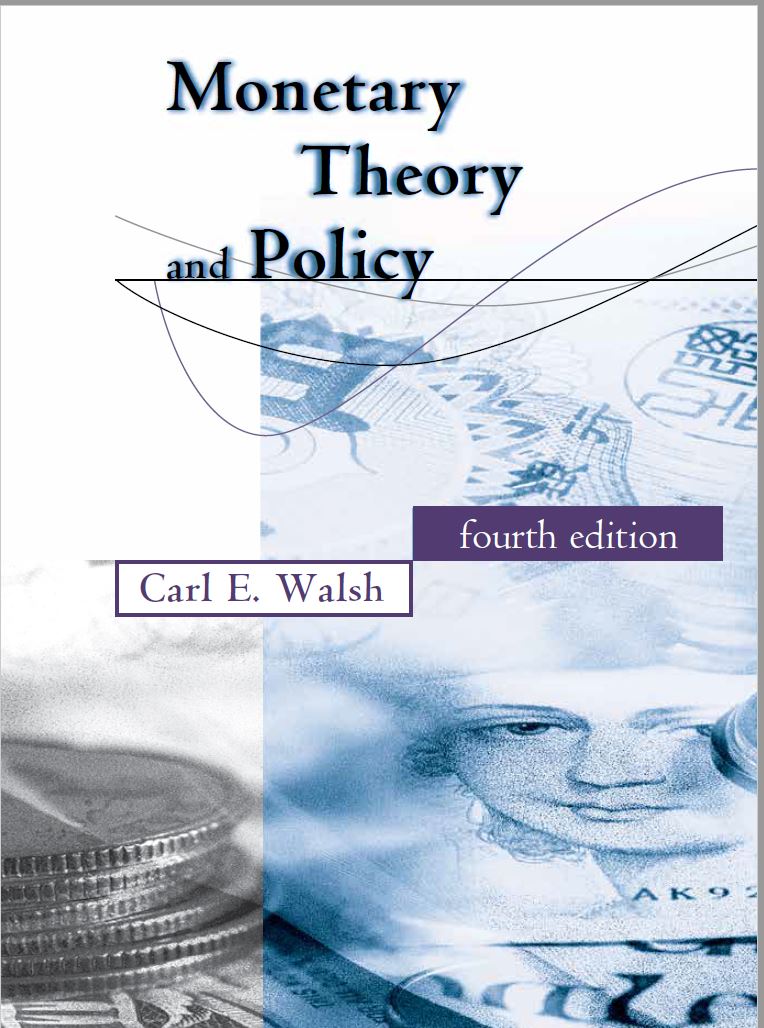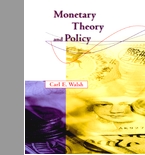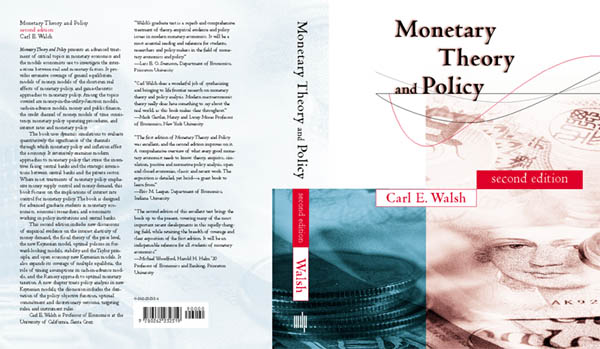This book presents an advanced treatment of the major topics of monetary economics. It is designed for use in a graduate course in monetary
economics, but it can also be used in graduate macro courses and the chapters on monetary
policy topics should be accessible to advanced undergraduates.
The fourth edition incorporates new or expanded material on labor markets in the new Keynesian model, open economy new Keynesian models, and and entire chapter on the effective
lower bound on nominal interest rates and balance sheet policies.
Solutions to the exercises:
Solutions to the problems in the fourth edition book -- coming soon
to instructors. The MIT Press site
has links for ordering an examination copy or for requesting the solutions manual.
Matlab programs
Programs use dynare and/or matlab.
A zip file containing all the programs used in the 4rd edition is available
here
Individual programs can be found below -- you will need to copy the text into your own file.
The MIU model:
miu_4e.dyn.
Ch2_figure_1.m.
Ch2_figure_2.m.
Ch2_figure_3.m.
Ch2_figure_4_5_6.m.
The CIA model:
cia_4e.dyn.
Ch3_figures.m.
The sticky information model: sipc_4e.m.
The new Keynesian model: Chapter 8:
for figure 8.1
for figure 8.2
for figure 8.3
Additional programs used in generating figures:
NKM_figure1.dyn: basic NKM with instrument rule used for figure 8.1
NKM_optd.dyn: NKM under optimal discretion.
NKM_optc.dyn: NKM under optimal commitment.
NKM_optd_phi.dyn: used for optimal discretion in figure 8.3.
NKM_optc_phi.dyn: used for optimal commitment in figure 8.3.
plot_comp.m: used for some plots.
The new Keynesian open economy models:
cgg2c.dyn: the Clarida, Gali, Gertler two country model..
cgg2c_fexog.dyn: the Clarida, Gali, Gertler two country model with foreign country exogenous.
gmsoe.dyn: the Gali-Monacelli small open economy model.
Equilibrium at the ELB:
zlb.m: used for figures in chapter 11.
Additional material:
Additional notes on the linear approximation to the MIU model of chapter 2 (3rd ed.).
Additional notes on the linear approximation to the CIA model of chapter 3 (3rd ed.).
Material cut from the second edition:
Do Central Bank Institutions Matter?, section 8.5 from the second edition.
The reserve market, section 9.4 from the second edition.
Material cut from the third edition:
The Obstfeld-Rogoff Two Country Model, section 9.2 from the 3rd edition.
Policy Coordination, section 9.3 from the 3rd edition.
Does credit matter?, section 10.6 from 3rd edition.
Typos:
List of typos as of April 2023.
Addition typos provided by Hengqiang Hu
School of Finance, Nanjing University of Finance and Economics(Oct. 2024).
Carl E. Walsh / UCSC / walshc@ucsc.edu


 |
Matlab programs|
Solutions manual|
Additional notes|
Typos|
Material cut from second edition
Material cut from third edition
|
Matlab programs|
Solutions manual|
Additional notes|
Typos|
Material cut from second edition
Material cut from third edition  ------>
------>
 ------>
------>
 ------>
------>
